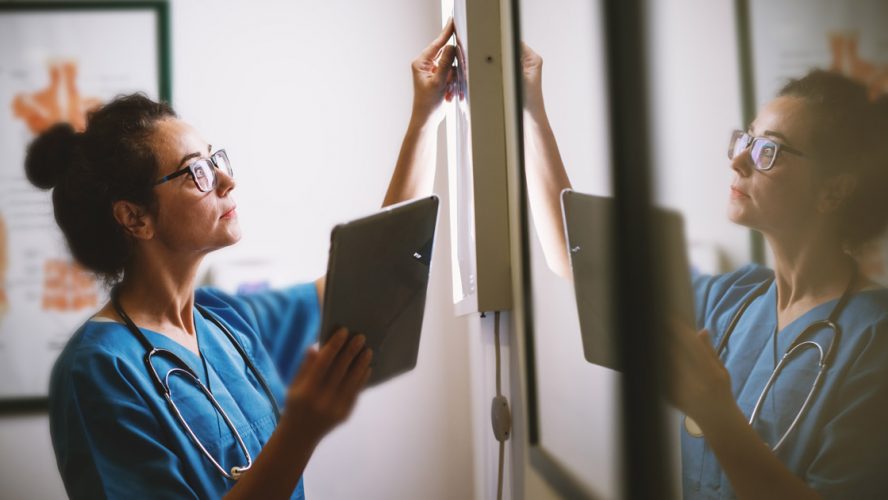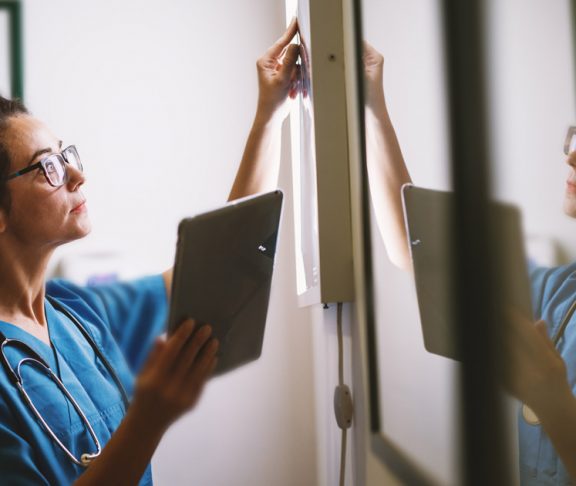
Dr Simon Blease
Musculoskeletal Radiology Consultant
From diagnosis to follow-up, an EOS exam provides low dose, full body, 2D/3D images and patient-specific datasets for optimised patient outcomes.
The EOS medical imaging system, based on a Nobel prize-winning technology, offers a low-dose method to obtain 2D/3D clinical images and data to assist in the diagnosis and follow-up of musculoskeletal conditions and orthopaedic surgical planning.
The EOS exam reduces the radiation dose delivered to the patient by around 85 per cent compared to conventional X-ray systems1. Patients stand upright or sit in a radiolucent chair, resulting in stereo-radiographic images of the patient’s anatomy in a functional or seated position.
According to Musculoskeletal radiology consultant Dr Simon Blease: “During the exam, collimated X-ray beams scan the patient from head to toe to acquire simultaneous frontal and lateral images in just 20 seconds. The sterEOS workstation can then generate 3D models of the patient’s skeleton.”
“The slot scan technology reduces scatter radiation to optimise image quality while minimising the dose. Dose is reduced by two to fifty times compared to other common X-ray technologies2.”
The capacity to produce full-body images with EOS eliminates the need to digitally ‘stitch together’ several conventional images; image stitching can reduce the accuracy of measurements due to patient motion. The high image quality with EOS produces accurate, full-body, weight-bearing images that make it easier for clinicians to comprehend compensatory mechanisms between the spine, hip and knee.
The EOS solution also has the ability to collect patient-specific data, including 2D and 3D measurements. Dr Blease reports, “It can accurately measure spinal and femoral angles, rotations and limb lengths, compare patient clinical parameters against reference values, and easily share the information thanks to customised patient reports.”
The associated sterEOS software assists clinicians in diagnosing current conditions, predicting future problems, planning treatments and monitoring the results to improve patient engagement and outcomes.
“EOS is a great system for our aging patients with degenerative spine disease. With the full-body images, we can analyse a patient’s sagittal balance to understand the types of corrections that are required to restore a correct posture.” Dr Blease emphasises: “More patients and general practitioners need to know that this kind of system exists.”
1 Diagnostic imaging of spinal deformities: reducing patient’s radiation dose with a new slot-scanning X-ray imager. Deschenes S et al. Spine (Phila Pa 1976)2010 Apr 20;35(9):989-9
2 EOS microdose protocol for the radiological follow-up of adolescent idiopathic scoliosis. Ilharreborde B. et al. Eur Spine J. 2015


